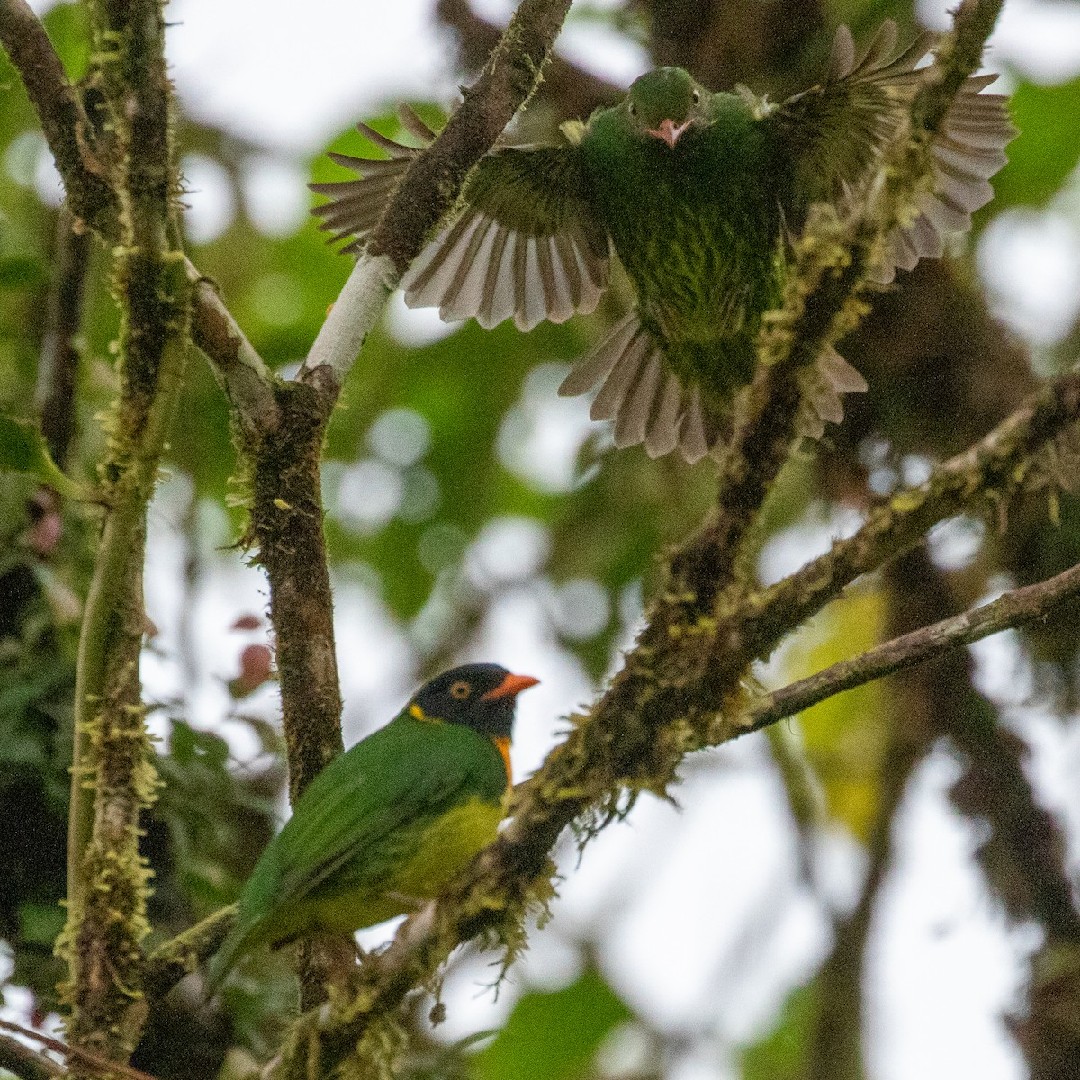Orange-breasted Fruiteater
A species of Typical Fruiteaters Scientific name : Pipreola jucunda Genus : Typical Fruiteaters
Orange-breasted Fruiteater, A species of Typical Fruiteaters
Botanical name: Pipreola jucunda
Genus: Typical Fruiteaters
Content
Description General Info
 Photo By Steve McInnis
Photo By Steve McInnis Description
The male orange-breasted fruiteater has a glossy black head and throat and green upper parts. The breast is bright orange and the belly yellow with green mottling at the side. The female is similar in appearance to the female masked fruiteater with green upper parts and green and yellow streaked underparts. Both sexes have yellow eyes, orange bill and greyish-green legs. This bird grows to a length of about 18 centimetres (7 in). The song is similar to that of the black-chested fruiteater, a high-pitched ascending "pseeeeeweet". 
Size
18 cm
Nest Placement
Tree
Feeding Habits
Orange-breasted Fruiteater consumes primarily fruit, often foraging while perched or occasionally hovering. Orange-breasted Fruiteater may join mixed-species flocks during feeding.
Habitat
Orange-breasted Fruiteater predominantly inhabits montane forests characterized by high moisture levels and dense moss coverage. These habitats are lush and offer a rich array of fruiting trees. The species thrives in cloud forest environments, which are noted for their consistent fog and high humidity, sustaining the diverse plant life essential for orange-breasted Fruiteater's diet and nesting.
Dite type
Frugivorous
General Info
Feeding Habits
Bird food type

Fruit
Distribution Area
This species is native to the foothills and slopes of the western side of the Andes in South America. Its range extends from southwestern Colombia to southwestern Ecuador, mainly between the altitudes of 600 and 1,900 metres (2,000 and 6,200 ft) above sea level. This fruiteater is usually found in the understorey of dense, wet, mossy forests. 
Species Status
The International Union for Conservation of Nature rates the orange-breasted fruiteater as being of "least concern", on the grounds that the bird has a reasonably-large range and is fairly common within that range, and its population seems to be steady. 

 Photo By Steve McInnis
Photo By Steve McInnis Scientific Classification
Phylum
Chordates Class
Birds Order
Perching birds Family
Cotingas Genus
Typical Fruiteaters Species
Orange-breasted Fruiteater